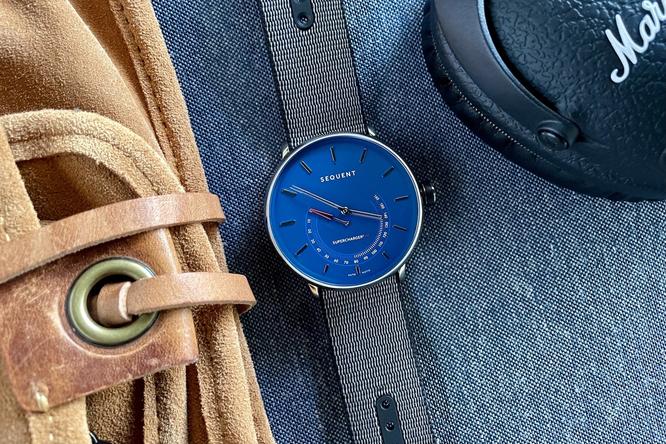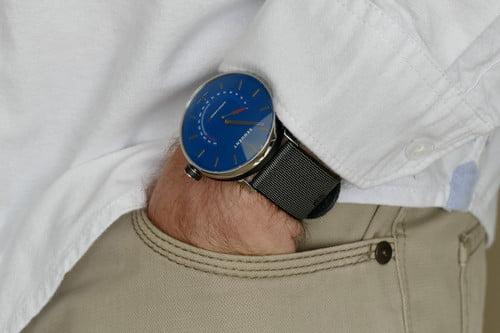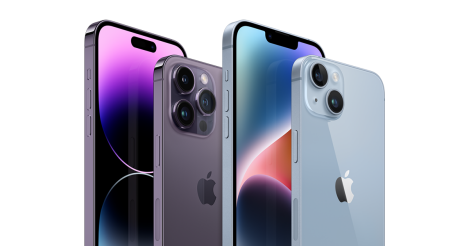Sequent SuperCharger 2.1 Premium HR review: Infinite power, limited tech
The hybrid smartwatch is the alternative to a touchscreen smartwatch favored by those who aren’t prepared to give up that traditional, analog watch look, but still want a degree of connected ability. The Sequent SuperCharger 2.1 Premium HR takes this concept a step further, as it not only doesn’t look like a smartwatch, but it also uses a power-delivery system that shares more with an automatic timepiece than it does with an Apple Watch.
ContentsThat means you never, ever need to charge this smartwatch, as it’s powered by the movement of your body. That’s hugely tempting, but what about the smart bit? It’s just as important on a hybrid as it is on a full smartwatch, and if anything, it’s far harder to implement well due to the watch not usually having a screen. The Sequent Supercharger 2.1 has the power, but does it have the smarts?
Design
I’ve been wearing the Sequent SuperCharger 2.1 Premium HR, the top model available from the company. It’s made from 316L stainless steel with an aluminum ring running around the 42mm case and sapphire crystal over the dial. It weighs about 77 grams with the strap, and is a substantial 14mm thick. This version has a blue dial, but you can also get versions with a white or a black dial. Turn the watch over and it has an open case back, showing the self-charging mechanism and its rotor, which I’ll come back to later, and in the center is the heart rate sensor. The crown is quite large, has a rubber cover over the sides, and Sequent’s logo on the end.
Sequent makes a big deal about the watch being designed in Switzerland — the mark of quality for traditional watches — but it doesn’t say it’s built in Switzerland, an important distinction. Nevertheless, it looks and feels very well made. The dial is fairly simple, with the brand name and markings stamped on it, and the polished baton indices only marking the hour. The baton hands have unfilled center sections, while the hand for the complication has a red arrow tip. It’s all rather minimalist, and reminds me of innumerable watches from MVMT, Daniel Wellington, and other such fashion brands.
It definitely doesn’t look like a normal smartwatch. There’s no screen, for a start, and the one complication doesn’t immediately give its high-tech credentials away. It’s a multipurpose indicator showing step count, power reserve, and heart rate. You have to look closely though, as the numbers are very small. There’s also a similarly tiny LED indicator light underneath the 12 o’clock mark, which only operates when the watch is syncing with your phone or performing an action.
The watch looks and feels well-constructed, and I like the open case back showing the rotor, which isn’t as beautiful as a mechanical movement, but has a certain techy charm to it. I don’t like the crown because it’s too big, something not helped by the useless rubber part around the edge, as you never need to turn the crown at all, making additional grip unnecessary. It’s also a thick watch, and the lugs mounted to the lower part of the case only accentuate the height.
I can live with the height of the SuperCharger 2.1, and the design, although simple, is still pleasing, but the Eco Tide strap is bad. It’s made from plastic waste taken from the ocean, which is excellent, but it’s incredibly unforgiving on your wrist. I’ve worn it for several weeks and I don’t think it has softened up at all — it’s just as uncomfortable now as it was on the first day. It’s not helped by an imprecise double-pin fastening, so the watch is either cutting off circulation or flopping over the side of your wrist. It’s attached using quick-release pins and, at 22mm, changing it for another strap isn’t difficult, but doing this should be because of a personal style preference, not because the supplied one is uncomfortable.
The Sequent SuperCharger 2.1 is a very modern-looking watch that will definitely appeal to those attracted to the minimalist watches commonly advertised on Instagram and by YouTube influencers. Just don’t order it with the Eco Tide strap.
Power
Before talking about the smart features, let’s talk about the way the Sequent SuperCharger 2.1 is powered, as it’s far more technically impressive than anything else about it. Automatic timepieces convert kinetic energy from the movement of your body into power for the watch’s movement. The SuperCharger does the same thing, but rather than gears and springs, it uses a tungsten rotor to feed a micro-generator.
It’s a neat, high-tech, sustainable, and very hands-off approach to powering a piece of wearable tech. Sequent says the SuperCharger has an “infinite” power reserve, and I’ve worn it for several weeks, with a few days off, and the power available has not dropped below 95%, according to the app. When you don’t wear it, the watch will hibernate to conserve energy. With regular use, I doubt the SuperCharger 2.1 will ever run out of power.
If you don’t wear the watch for some time and the battery does fully run out, a charging pad is included in the box so you can get it going again. Unfortunately, this necessitates the inclusion of charge points on the watch’s case, which are found on the left-hand side and ruin the otherwise clean lines.
1 of 5
Unusually, you can “feel” the rotor inside the SuperCharger working as it spins. It’s not distracting, and doesn’t make an audible sound unless you hold it to your ear, but it’s not something you find with a mechanical automatic watch. I quite liked the sensation, as it made the SuperCharger feel like a living thing, but I’ve gradually gotten used to it and rarely feel it anymore.
The Sequent SuperCharger really is a smartwatch you don’t have to charge, and that will be a considerable benefit to anyone put off by smartwatches in general due to the necessity of daily charging.
Smart features
The lack of any need to charge it is the Sequent SuperCharger’s first step on the road to being a successful smartwatch, but the smart functionality needs to be just as compelling. This is not an Apple Watch competitor and makes no secret of the fact, but unfortunately, it’s not a competitor to any other hybrid watch either, due to tech that feels years out of date.
1 of 3It has basic fitness tracking and does not deliver notifications, or have a haptic motor. This in itself isn’t a bad thing, but the operation of the watch and the accompanying app both feel old and clunky compared to the competition. Don’t expect anything like individual workout plans, information like step cadence, or in-depth analysis of data collected.
Starting a workout requires pressing the crown for two seconds until the LED flashes blue, the hands rotate, and the LED goes purple. To end the session, you press the crown three times. It’s a little bit more complex than it needs to be, but worse is that it doesn’t seem to be very accurate. Despite completing the steps, the SuperCharger has failed to record several workout sessions, and because the promised indicator inside the app doesn’t work — it’s supposed to show a dot on the workout mode in the Sequent app when it’s active — it’s very difficult to tell if your inputs have been successful.
The heart rate recording is also haphazard, with some sessions showing heart rate data and others not, and that’s the same with the GPS. It doesn’t have GPS built in, so it relies on your phone’s GPS. Even with the app open on my phone, it failed to pull in location data during a walk. When a workout was tracked, the app showed distance, calorie burn, time, pace, and steps. There is a sleep mode in the app, but it’s listed as being in “beta,” and I find the strap far too uncomfortable to wear overnight anyway.
From a fitness-tracking perspective, there is vastly more ability in the $50 Xiaomi Mi Band 6.
The complication on the watch’s dial shows step count during the day and heart rate data during a workout session. It seems to be mostly consistent with my Apple Watch Series 6, but it’s quite hard to tell due to the tiny numbers and even more minuscule interim marks. If asked what my heart rate was, I would only really be able to say, “between 110 and 120 beats per minute,” for example.
This vagueness is compounded by the sensor not continuously reading your heart rate. You can set it to read every five minutes, 30 minutes, or two hours for daily use in the app, and it seems to only update every few minutes when working out. The app doesn’t link with Apple Health, Google Fit, Strava, or any other fitness platform. From a fitness-tracking perspective, there is vastly more ability in the $50 Xiaomi Mi Band 6 than in the $482 Sequent SuperCharger.
A fitness-tracking system that’s a pain to activate, limited on features, delivers questionable accuracy, and offers no way to share the data it collects outside of the default app isn’t very inspirational. It’s absolutely not going to satisfy someone seriously into fitness, and its awkward controls will prove annoying to someone who only uses it casually.
Price and availability
The Sequent SuperCharger 2.1 Premium HR as seen here costs $482. Alternatively, you can buy the watch without the heart rate sensor for $428, or a version made from aluminum rather than stainless steel without the heart rate sensor for $374. It’s available through Sequent’s own online store.
Our take
As a showcase for the kinetic energy system, the Sequent SuperCharger is excellent. The technology is really interesting and has worked well during my time with the watch. Not having to charge a smartwatch, ever, is hugely desirable, freeing, and by far the biggest attraction of the Sequent watch. Unfortunately, the far less successful smart features don’t give me a reason to put the watch on. While not showing notifications is fine, the fitness tracking can’t compete with current smartwatches and fitness bands, isn’t very intuitive, and is not detailed enough for anyone seriously into sports.
It has the right credentials for a good watch — a modern Swiss design, sapphire crystal, and a stainless steel case — plus that everlasting energy, but without compelling smart functionality, the innovative way it’s powered is wasted. For close to $500, a world of excellent and highly desirable watches — smart and otherwise — opens up, and the Sequent watch struggles to compete.
I saw the original version of the SuperCharger at the Baselworld watch show in 2018, and then tried the SuperCharger 2.0 for a very short time in 2019. Now in 2021, despite time having passed and the watch getting a heart rate sensor, the SuperCharger 2.1, unfortunately, feels like it’s still stuck in 2019, and that’s not good enough when the rest of the hybrid market has moved onward and upward.
Yes. If you specifically want a hybrid smartwatch, we suggest looking at Casio’s G-Shock range. The solar powered G-Shock GBD-200 includes fitness tracking and notifications, for example, while the GBD-H1000 adds GPS and a heart rate sensor to the mix. The Withings ScanWatch is even more health-focused, has a minimalist design, and is made from high-quality materials. The Skagen Jorn Hybrid HR has an e-Ink screen to minimize power consumption, a heart rate sensor, and more smart features. All cost less than the Sequent SuperCharger.
If you really want more smart features, then a full touchscreen smartwatch is the only way to go. We recommend the Apple Watch Series 6 or Apple Watch SE for iPhone owners, or the Samsung Galaxy Watch 4 for Android phone owners.
The stainless steel body and scratch-resistant sapphire crystal means the SuperCharger should keep its looks even with some harsh treatment, plus it’s water-resistant to 50 meters and is covered by a generous five-year warranty. The app is available for iOS and Android. Provided the app is kept up to date, the Sequent SuperCharger should last for many years, helped by the lack of a battery requiring continuous daily charges.
No. Although the kinetic energy system is innovative, the fitness tracking is too basic to be of use, and the high price becomes very difficult to justify.



